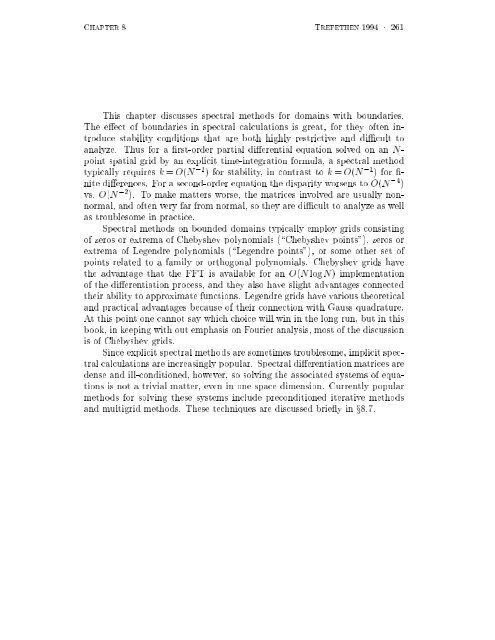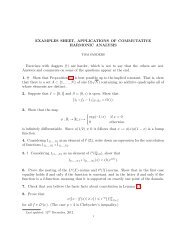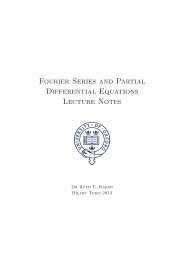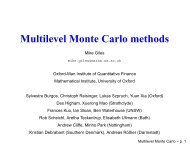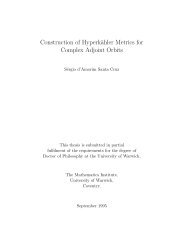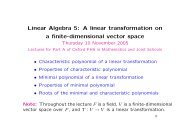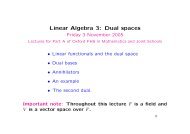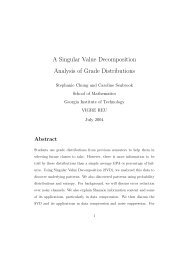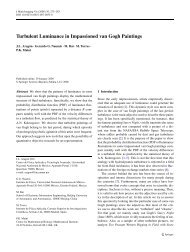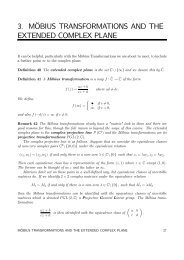Chapter 8. Chebyshev spectral methods
Chapter 8. Chebyshev spectral methods
Chapter 8. Chebyshev spectral methods
You also want an ePaper? Increase the reach of your titles
YUMPU automatically turns print PDFs into web optimized ePapers that Google loves.
CHAPTER 8 TREFETHEN 1994 261<br />
This chapter discusses <strong>spectral</strong> <strong>methods</strong> for domains with boundaries.<br />
The e ect of boundaries in <strong>spectral</strong> calculations is great, for they often introduce<br />
stability conditions that are both highly restrictive and di cult to<br />
analyze. Thus for a rst-order partial di erential equation solved on an Npoint<br />
spatial grid by an explicit time-integration formula, a <strong>spectral</strong> method<br />
typically requires k = O(N ;2 ) for stability, in contrast to k = O(N ;1 ) for -<br />
nite di erences. For a second-order equation the disparity worsens to O(N ;4 )<br />
vs. O(N ;2 ). To make matters worse, the matrices involved are usually nonnormal,<br />
and often very far from normal, so they are di cult to analyze as well<br />
as troublesome in practice.<br />
Spectral <strong>methods</strong> on bounded domains typically employ grids consisting<br />
of zeros or extrema of <strong>Chebyshev</strong> polynomials (\<strong>Chebyshev</strong> points"), zeros or<br />
extrema of Legendre polynomials (\Legendre points"), or some other set of<br />
points related to a family or orthogonal polynomials. <strong>Chebyshev</strong> grids have<br />
the advantage that the FFT is available for an O(N logN) implementation<br />
of the di erentiation process, and they also have slight advantages connected<br />
their ability to approximate functions. Legendre grids have various theoretical<br />
and practical advantages because of their connection with Gauss quadrature.<br />
At thispoint one cannot say whichchoice will win in the long run, but in this<br />
book, in keeping with out emphasis on Fourier analysis, most of the discussion<br />
is of <strong>Chebyshev</strong> grids.<br />
Since explicit <strong>spectral</strong> <strong>methods</strong> are sometimes troublesome, implicit <strong>spectral</strong><br />
calculations are increasingly popular. Spectral di erentiation matrices are<br />
dense and ill-conditioned, however, so solving the associated systems of equations<br />
is not a trivial matter, even in one space dimension. Currently popular<br />
<strong>methods</strong> for solving these systems include preconditioned iterative <strong>methods</strong><br />
and multigrid <strong>methods</strong>. These techniques are discussed brie y in x<strong>8.</strong>7.


